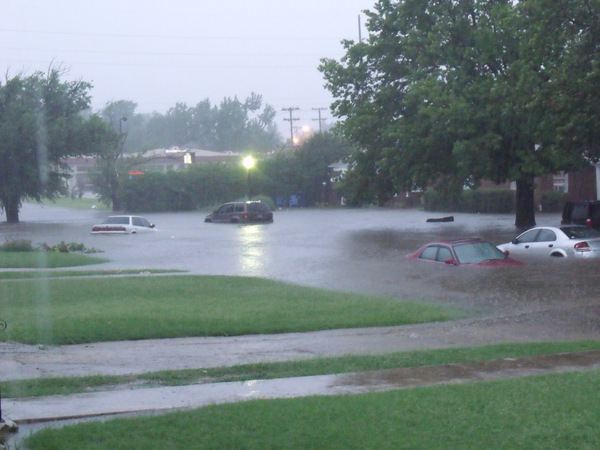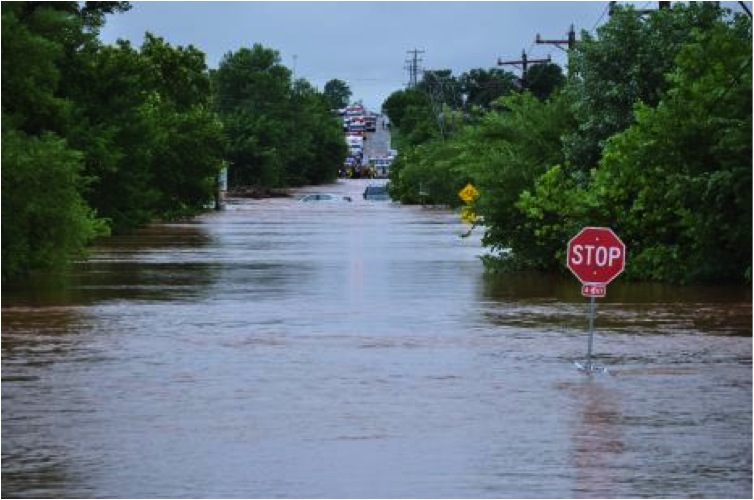
Floods and flash floods kill more people each year than any other severe weather hazard. And a few extra minutes of notice can make a big difference — reducing deaths and economic loss. This is why researchers at NOAA’s National Severe Storms Laboratory are partnering with the NOAA National Weather Service Weather Prediction Center to test an experimental flash flood and intense rainfall forecasting tool.
The Warn-on-Forecast System, or WoFS, provides additional information different from what forecasters currently use because it is high-resolution and can update quickly. The weather model focuses on individual thunderstorms and hazards associated with those storms a few hours before they form and as they develop. Ultimately, the new tool will help forecasters issue flash flood warnings earlier.
The Norman-based researchers are collaborating with WPC and several NWS forecast offices to study how they are using WoFS in real-time when making forecast decisions, said Nusrat Yussouf, a research scientist at the University of Oklahoma Cooperative Institute for Mesoscale Meteorological Studies.
“Our evaluation process of research-to-operations back to research helps us improve experimental products,” she said.
This summer the prediction system proved its usefulness. For example, in July when parts of the Northeast and mid-Atlantic were inundated with intense rainfall, WPC forecasters used WoFS as they observed the perfect conditions for flash flooding over the I-95 corridor.
The WoF experimental system showed up to five inches of rain in some areas. The guidance  provided through WoFS gave forecasters more confidence to use the phrase “flash flooding likely” when they issued area forecasts for parts of Pennsylvania and New Jersey, down to Baltimore, Washington D.C and Virginia. The storms resulted in flooded roads during rush hour, stranded motorists, cancelled and delayed flights, power outages and property damage.
provided through WoFS gave forecasters more confidence to use the phrase “flash flooding likely” when they issued area forecasts for parts of Pennsylvania and New Jersey, down to Baltimore, Washington D.C and Virginia. The storms resulted in flooded roads during rush hour, stranded motorists, cancelled and delayed flights, power outages and property damage.
This short-term exploration of the experimental WoFS’s capabilities in NWS operations is valuable for researchers at NSSL and OU CIMMS. Yussouf, whose work supports NSSL, said researchers cannot easily study NWS forecasters’ natural decision-making process in a controlled testbed environment.
“The traditional testbed experiment environments are more controlled with a routine start and end time,” she said. “We’ve created something more organic in operations that gives us insights into how that decision process occurs and how the WoF workflow may look in NWS operations in the future.”
Forecasters provide feedback to researchers throughout the experiment, including products they would like to see and what does or does not work well for them.
Yussouf said the collaboration with WPC is mutually beneficial since the Center focuses on intense rainfall and flash flooding events.
“Our goal is to help provide forecasters more tools to save lives and property,” Yussouf said. “This is one more tool to help them.”



